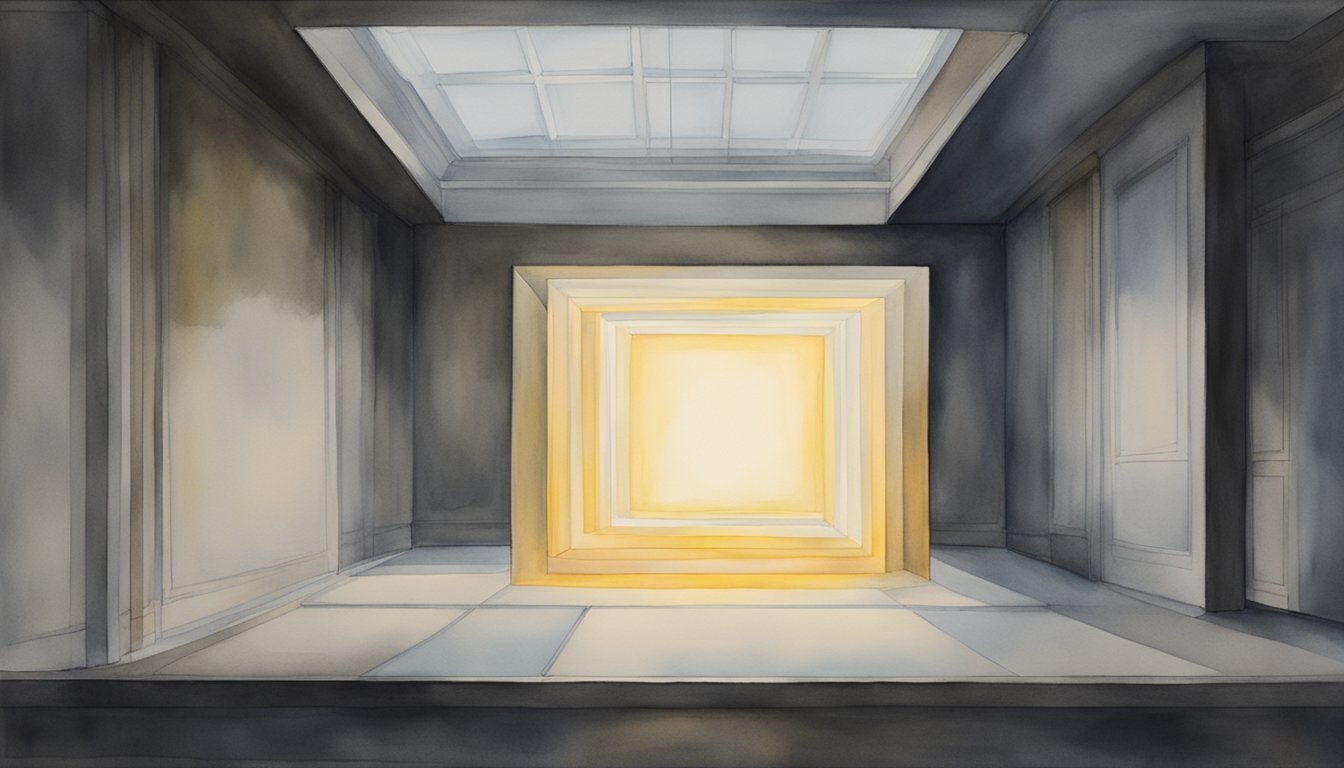James Turrell: Master of Light and Space
James Turrell, an avant-garde American artist, has gained international acclaim for his profound work with light and space. His art challenges perception, creating experiences that transcend the material world.
Early Life and Influences
James Turrell was born on May 6, 1943, in Los Angeles, and attended Pomona College, where he initially concentrated on psychology and mathematics. Later, he pursued art, drawing on his Quaker upbringing and interest in perceptual psychology. He became a key figure in the Southern California Light and Space movement, which explored perceptual phenomena and engaged with the heightened sensory experiences of viewers.
Significant Art Installations
Turrell is renowned for his enigmatic light installations that blend artificial and natural illumination. His series of Skyspaces involves chambers with an aperture in the ceiling, open to the sky. Another major endeavor is the Roden Crater project, an extinct volcano in Arizona that Turrell is transforming into a colossal naked-eye observatory, integrating art, architecture, astronomy, and engineering.
Contributions to Art Movements
Turrell’s contributions to the Light and Space movement are monumental. He expanded the definition of art, using light as a medium to manipulate spaces and viewer perception. Collaborating with other artists like Robert Irwin, Turrell’s work furthers the understanding of human visual and psychological experiences. His installations often create immersive environments that challenge the boundaries between the physical and the ephemeral. Through his exploration of perception, Turrell invites viewers to engage deeply with the act of seeing itself. Unlike the traditional landscapes found in bob ross paintings for sale, Turrell’s work emphasizes experience over representation, making light the central subject of his art.
Awards and Honors
The artist’s innovation and influence in contemporary art have been recognized with numerous awards, including the prestigious MacArthur Fellowship in 1984. Additionally, Turrell was honored with the National Medal of Arts, bestowed upon him by the President of the United States for his significant contributions to the field.
Public Engagement and Education
Turrell’s work extends to public engagement and education. He has lectured extensively at institutions like the University of California and has been integral in the development of the graduate studio art program at the university. His installations, like Aten Reign, unveiled at the Solomon R. Guggenheim Museum, continue to inspire diverse audiences, inviting them to explore the interplay between light, perception, and space.
Understanding Turrell’s Artistic Methods

James Turrell’s artistic oeuvre centers around the manipulation of light and space, creating immersive experiences that alter perception. His methods interlace art with science, engaging viewers in a direct sensory encounter.
Philosophy of Perception and Light
Turrell’s artworks are founded on the principles of perceptual psychology, a discipline he studied at Pomona College. The artist’s fascination with the ganzfeld effect, a phenomenon of visual perception, informs his installations that often induce a meditative state. By simplifying sensory experience, Turrell’s pieces, such as his ganzfeld works, compel the observer to become aware of the act of seeing itself.
Techniques and Materials
The artist employs a variety of techniques and materials to sculpt light as if it were a tangible material. From incandescent bulbs to LED lights, each illumination choice is meticulously selected to enhance the viewer’s experience. Through controlled lighting conditions, Turrell transforms spaces into canvases painted with light.
Interplay with Natural Elements
Turrell masterfully weaves natural light into his works. He meticulously observes the sun and moon’s movements and incorporates these elements to create ephemeral and dynamic experiences. His understanding of natural elements extends to harnessing the changing light of the horizon and the desert’s vastness to intensify the perception of endless space.
Site-Specific Works and Collaboration
Turrell’s site-specific installations, such as the ongoing Roden Crater project in the Arizona desert, demonstrate a deep collaboration with the site’s topography and the sky above. Integrating complex technology with the natural world, these installations not only shape light but also viewers’ connection with the environment around them. Turrell’s work at the Mattress Factory showcases how these concepts translate within an institutional space, offering a contrasting yet equally profound exploration of perception.

